11 October 2025
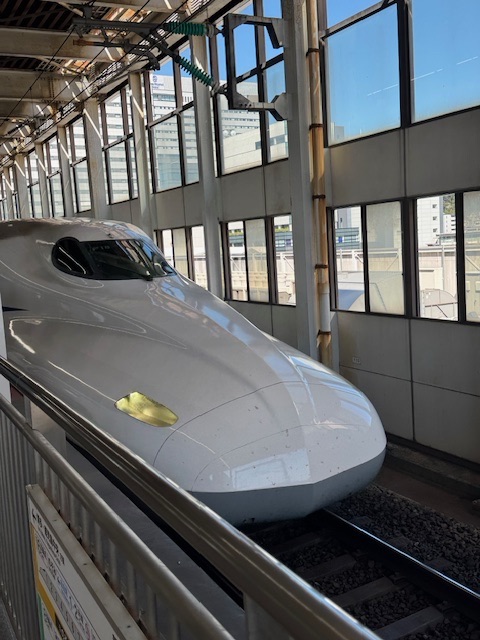
We visit a food market at the train station where we buy a bento: a chicken box lunch. We pay with our Icoca rail card. Our Shinkansen departs Hiroshima on the minute and speeds us in an easterly direction to Kyoto. There, we transfer to a local train to Nara. Our Nara hotel has been upgraded to the Marriott.
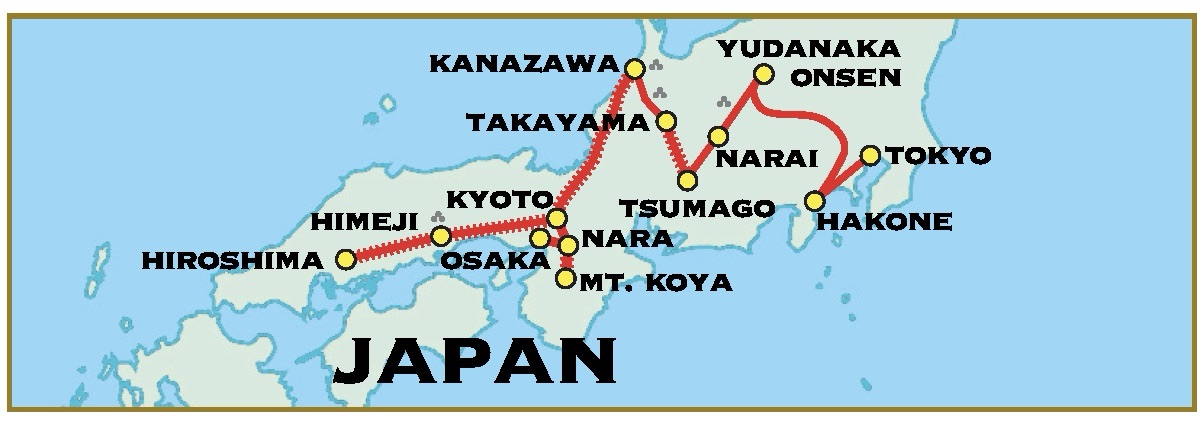
Nara Uncovered: History, Harmony, and a Plethora of Begging Deer
Nara, located in Japan’s Kansai region, was Japan’s first permanent capital, established in 710 CE during the Nara period. The city was modeled after the Chinese Tang capital of Chang’an. It became the political and cultural center of Japan, hosting the imperial court and government. Nara flourished as a center of Buddhism, art, and learning, with magnificent temples such as Todai-ji, which houses the Great Buddha.
By 794, the capital moved to Kyoto, but Nara remained an important religious and cultural hub. Many of its historic temples, shrines, and traditional streets survive today, and the city is famous for its roaming deer in Nara Park. Designated a UNESCO World Heritage Site under the name “Historic Monuments of Ancient Nara,” the city’s significant temples and artwork continue to attract visitors like me interested in Japan’s early history, architecture, and spiritual heritage.
Nara Park
Nara Park is a vast green space in the heart of Nara, stretching over 1,200 acres and home to some of the city’s most important landmarks, including Todai-ji, Kasuga Taisha, and the Nara National Museum. What makes the park truly unforgettable, though, are its free-roaming deer. Considered messengers of the gods in Shinto tradition, the deer have been protected in Nara for centuries and now number in the hundreds, possibly thousands.
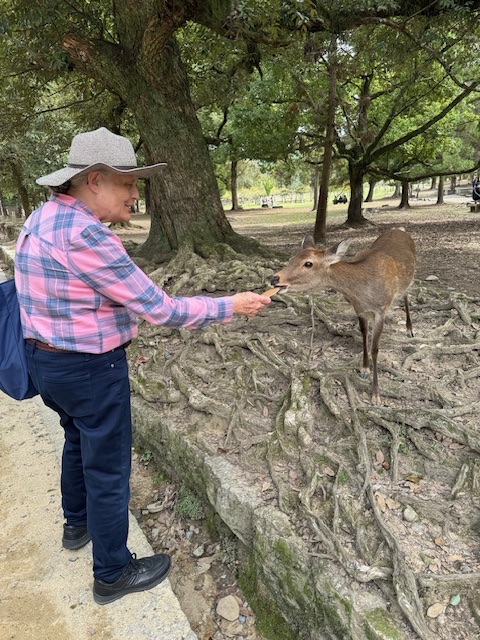
The deer tend to steal the show. They wander the park like entitled locals, weaving through temple gates, lounging in the shade, and stopping people in their tracks with expectant stares. They are not to be ignored!
Vendors sell rice crackers called shika senbei, and the deer have figured out the system. They teach their children at a very young age how to play the game. Bow politely, get a treat. Of course, some skip the pleasantries and go straight for your pockets or shopping bags. It’s equal parts charming and cheeky.
Nara National Museum
The museum’s architecture was almost as surprising as the pesky deer hoping for a handout. Established in 1889, the building differs from much of traditional Japanese architecture. It was built in a Western-style, Meiji-era design. Completed in 1895, the museum was designed by Katayama Tōkuma, one of Japan’s first architects trained in Western methods. It features yellow brick walls, arched windows, and a symmetrical layout reminiscent of European Renaissance or Neo-Classical architecture.
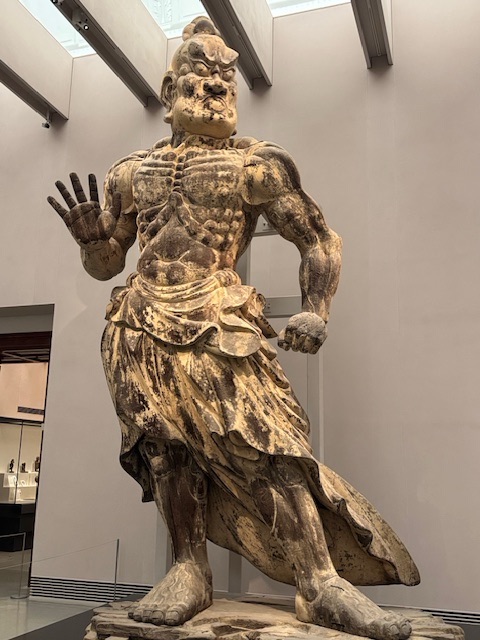
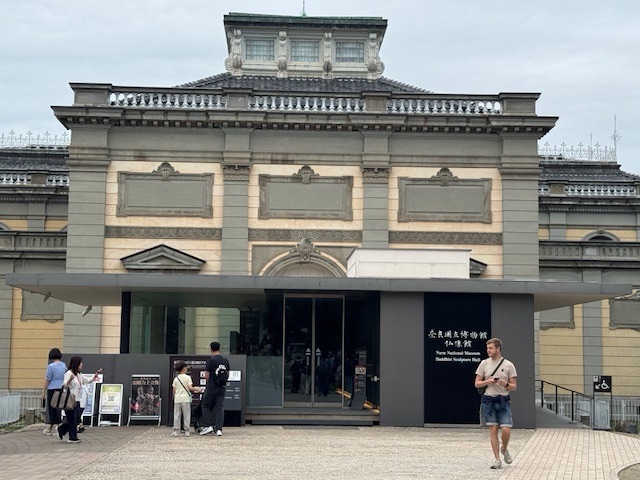
Japan embraced Western architecture during the Meiji period (1868–1912) as part of an effort to modernize and strengthen the country after centuries of relative isolation. Following the end of the Tokugawa shogunate, Japan sought to adopt Western technology, education, military systems, and culture to compete with industrialized nations and avoid its own colonization. Architecturally, Western-style buildings symbolized progress, power, and modernization.
Exploring the Exhibits
The Nara National Museum is primarily dedicated to Japanese Buddhist art. Many of its best exhibits focus on religious sculptures, paintings, and ritual objects. Among the highlights are large wooden statues of Buddhas and Bodhisattvas, some dating back to the 8th century, including works from Todai-ji and Kōfuku-ji temples.
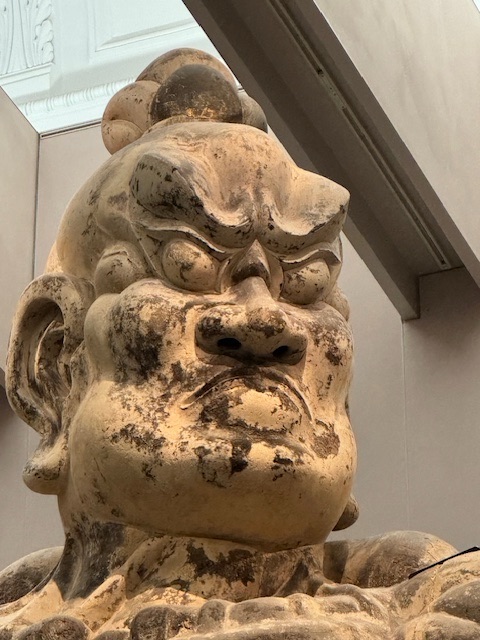
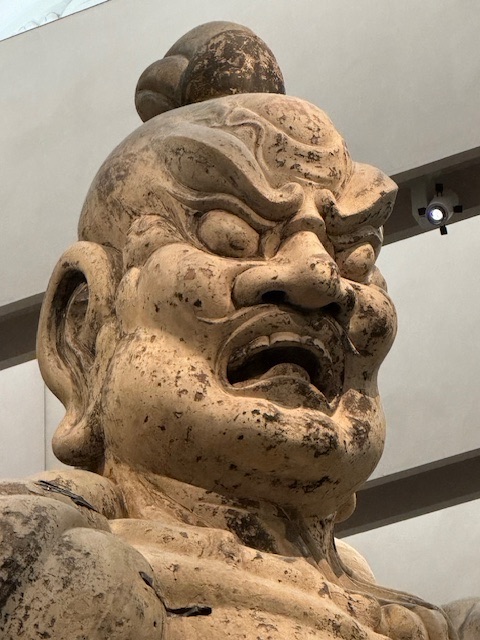
Kongō Rikishi (Un-Gyō and A-Gyō)
(Kinpusenji Temple, Nara)
While the original Daibutsu (Giant Buddha) is at Todai-ji Temple, the museum houses smaller wooden and bronze Buddha statues, showcasing intricate carving and serene expressions that reflect different periods of Japanese Buddhist art. The Kannon Bodhisattva Statues are multi-armed and multi-headed representations of compassion. Fine details demonstrate both religious symbolism and the craftsmanship of temple artisans.
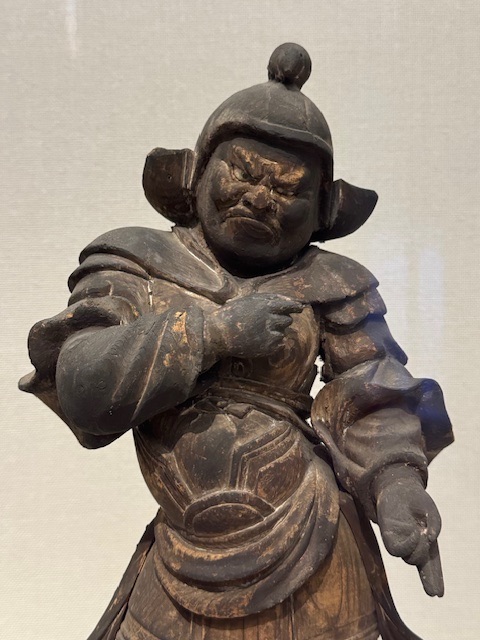
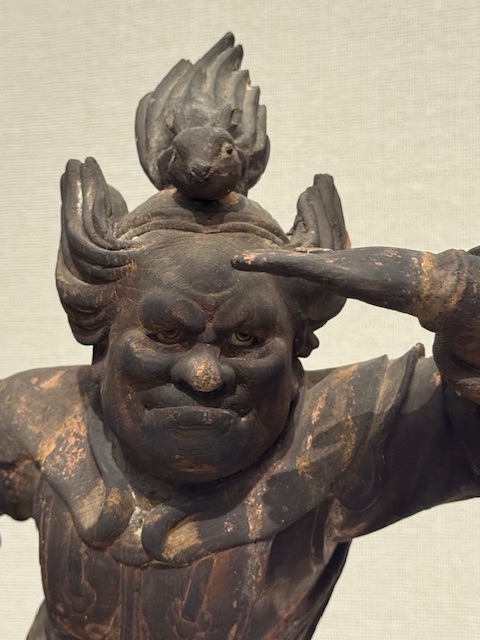
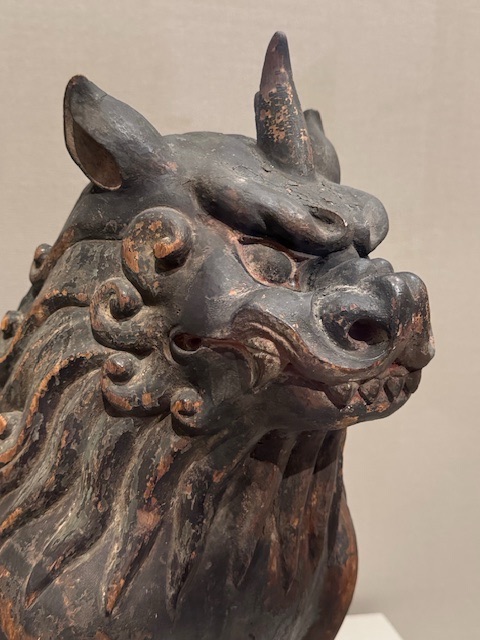
The museum also displays intricately crafted ritual implements, ceremonial robes, and scrolls, which illustrate the artistry and devotion of Japanese Buddhist practices. Colorful mandalas, hanging scrolls, and illustrated sutras display ancient painting techniques. They acted as meditation aids in temples.
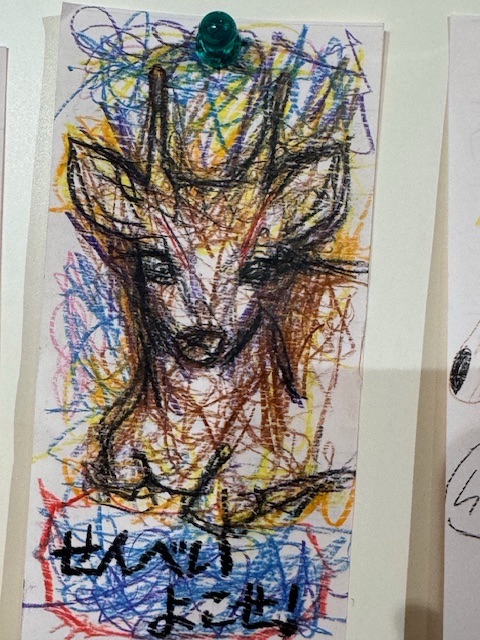
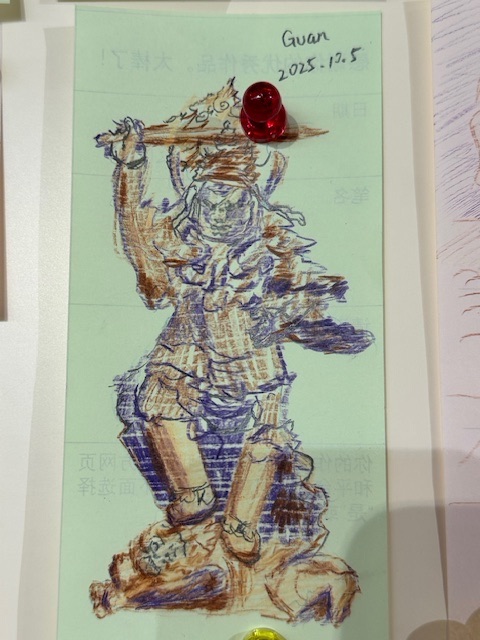
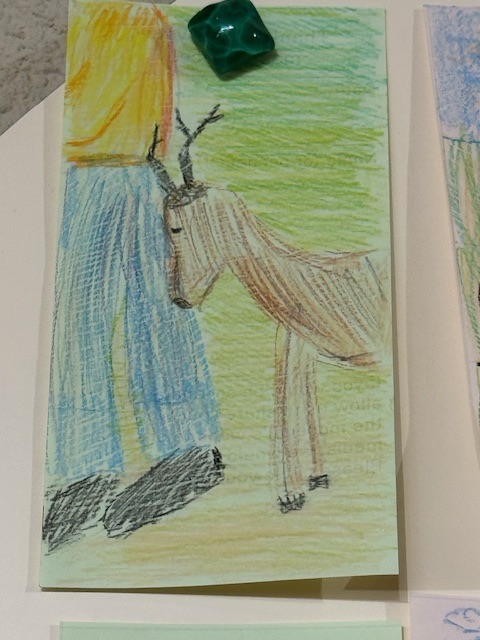
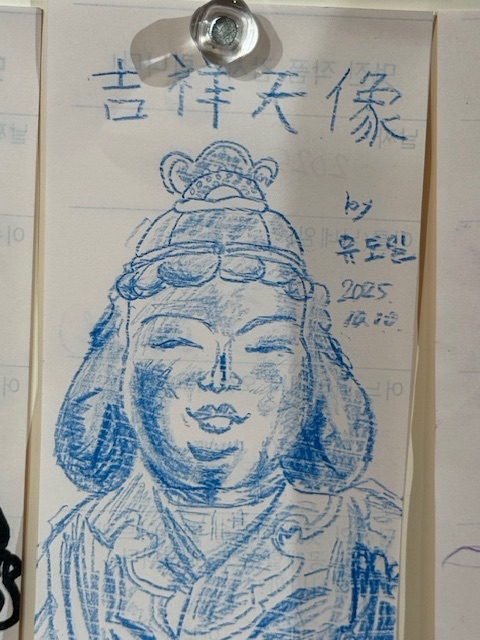

A wonderful section of the museum is the area for children to express their creativity. Like the deer, all personalities and expression are on display. But the recalcitrant students don’t bet banished to C Team.
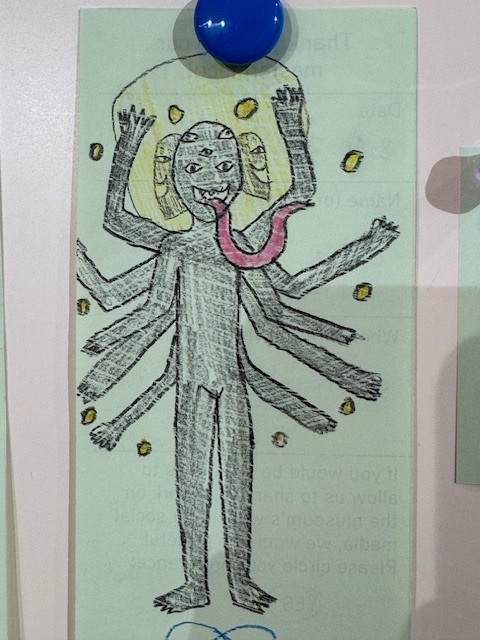
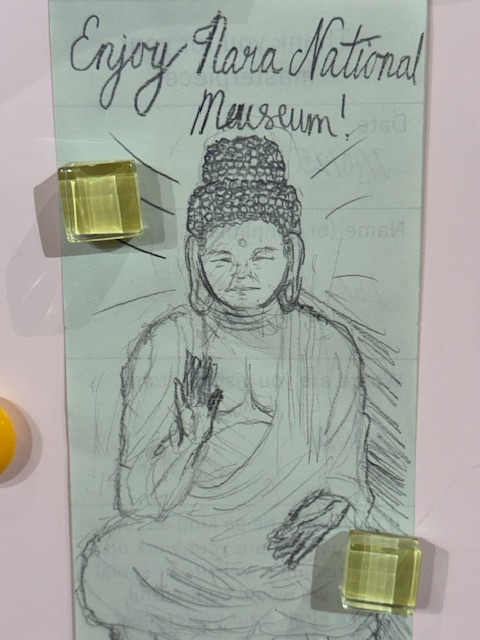
Paradise Has Its Politics
The roaming deer are cute. There are road signs giving them the right of way and biscuit sellers for those who want to attract a deer. In reality, the deer will seek you out no matter what you have in your hands, be it a cookie or tourist map.
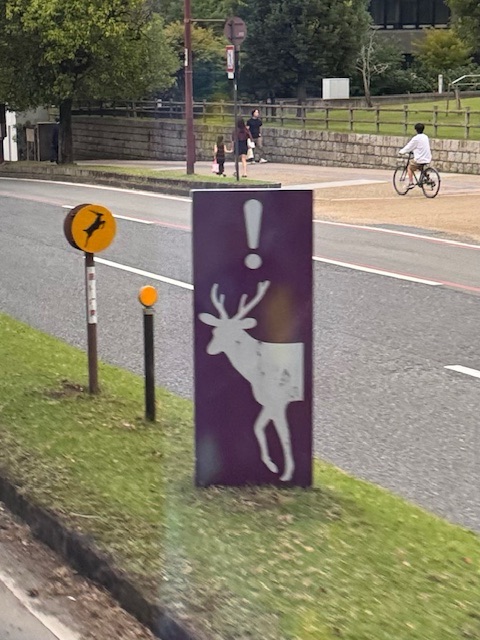
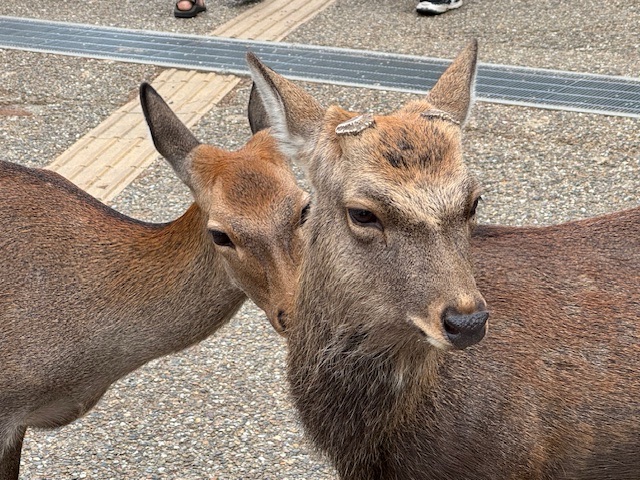
The furry four-legged Japanese deer are actually related to an elk. Their bugling resounds across the park. I am told there is a behavior modification program for them. The sacred deer roam freely, bow for crackers, and occasionally nudge you or invade your bag when you don’t hand them over fast enough. But even paradise has its politics.
Making one deer-misstep too many leads bad boys and girls to excommunication and deportation. This can be especially true during rutting season in fall. Being too pushy, biting or head butting are no-nos.
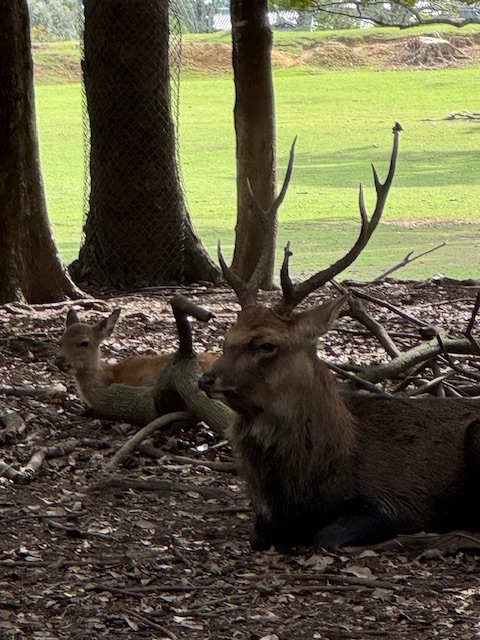
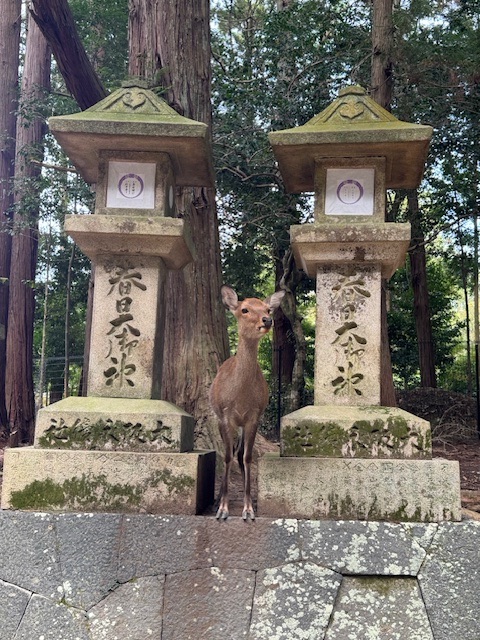
The A Team ranks as model citizens, bowing sweetly. B Team members prove to be the pushy snack thieves with attitude issues. From there, only two greedy hoof steps leads the recalcitrants to C Team. About 180 bad actors graduate annually to deer heaven, presumably with unlimited biscuits.
Still, no worries — the deer population continues to outnumber the tourists, and there’s no shortage of furry beggars hustling the temple grounds like seasoned street performers. They are viewed as sacred so allowed to jay walk and pick-pocket tourists to their heart’s content.
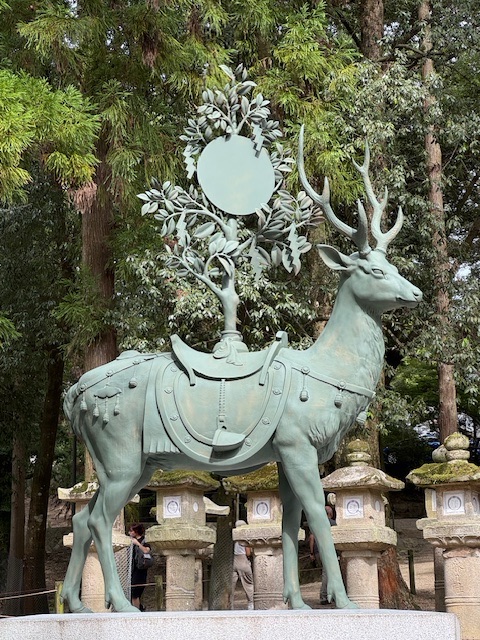
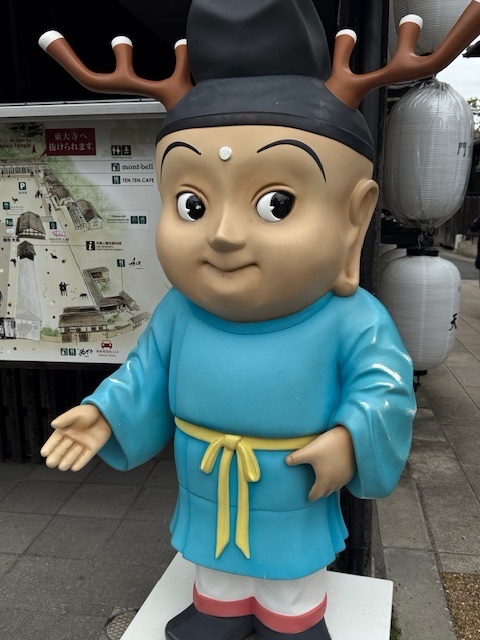
Dasher and Dancer, Prancer and Vixen,
Comet and Cupid in holiday fixin’,
Donner and Blitzen with Rudolph in view,
And tagging along comes sweet Bambi too.
They’ve traded the North Pole for temples and trees,
Mooching for crackers with elegant ease.
In Nara they wander, both holy and bold—
Santa’s whole herd gone rogue in the fold!
Naramachi
Not far from Nara Park and the National Museum one finds Nara’s old town and the merchant district with its traditional wooden houses (machiya), small shops, cafes and restaurants. One can quickly get lost while strolling its narrow, winding streets and alleys.
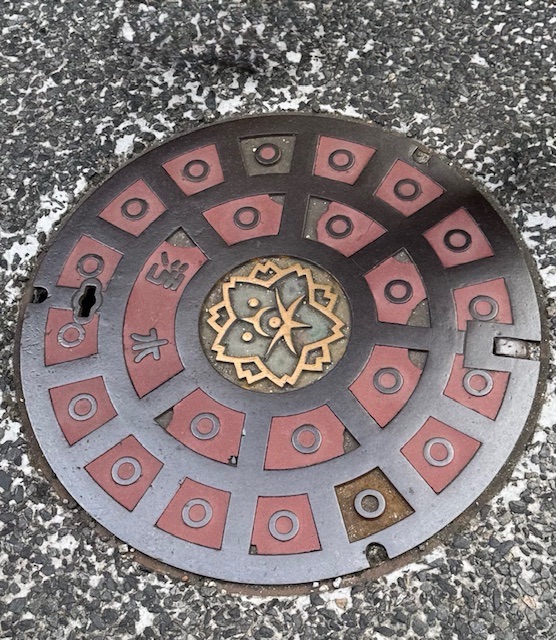
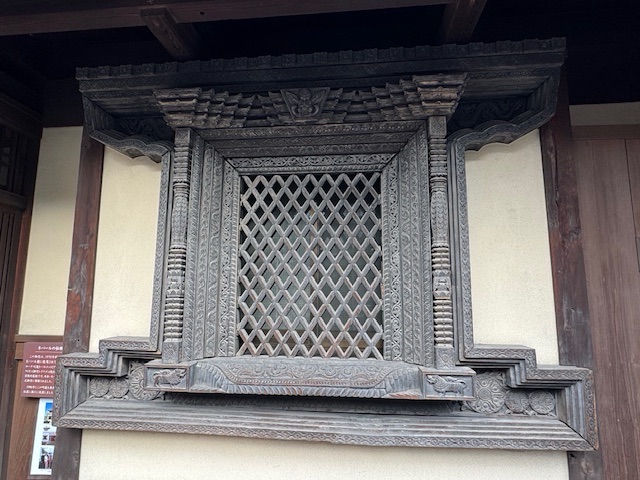
Many of the machiya have been preserved or restored. Some open to the public as museums.
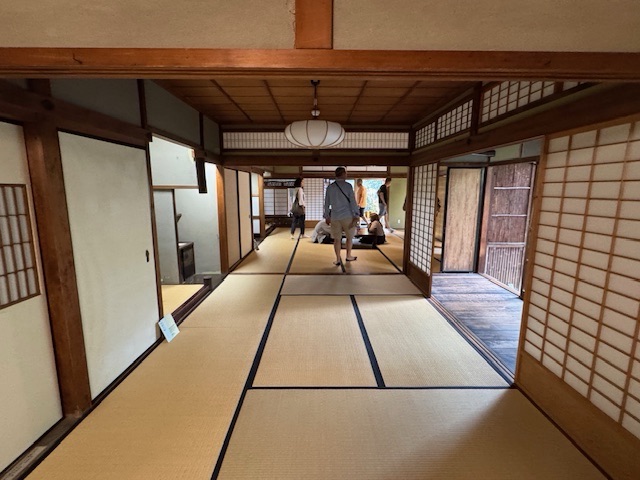
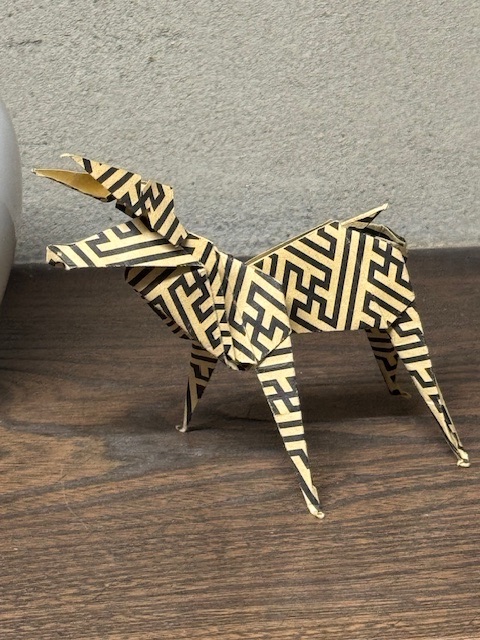
What makes Naramachi different from other old towns in Japan, like Kanazawa or Gion District in Kyoto, is its scale and down-to-earth atmosphere. It is more subdued and less commercialized, reflecting its roots as a merchant quarter rather than a castle town or samurai district. Instead of rows of grand houses or bustling tourist markets, Naramachi feels more intimate, with modest homes, family-run shops, and hidden eateries. Walking through it offers a slower, quieter experience of traditional Japan
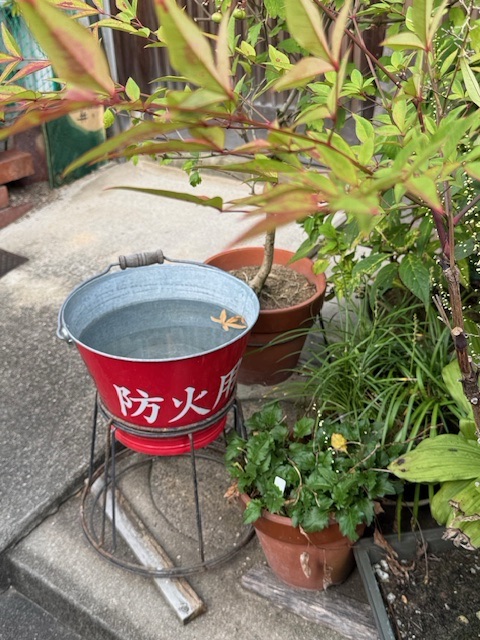
Todai-ji Temple
This temple ranks as the largest wooden structure in the world. Truly massive, the current building, reconstructed in 1709, is about 187 feet long, 164 feet wide, and 161 feet high. Inside, the scale feels even more overwhelming because the colossal bronze Great Buddha statue dominates the hall.
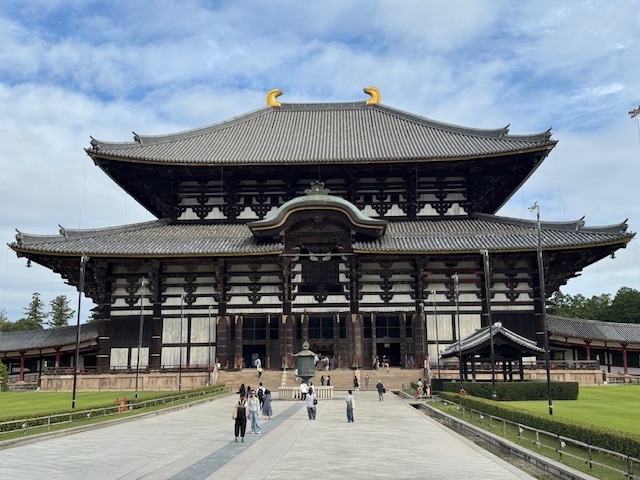
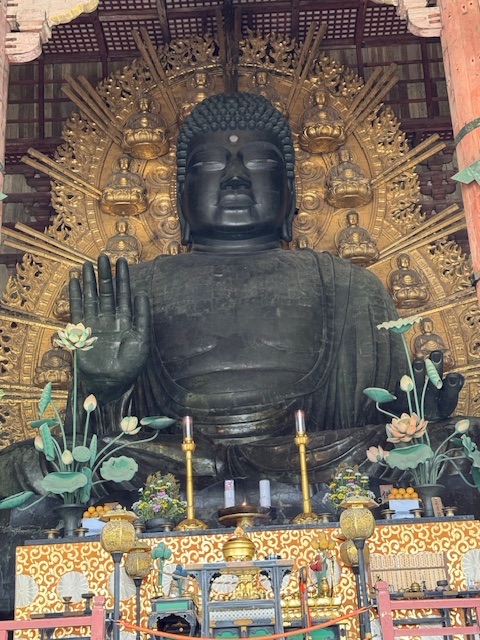
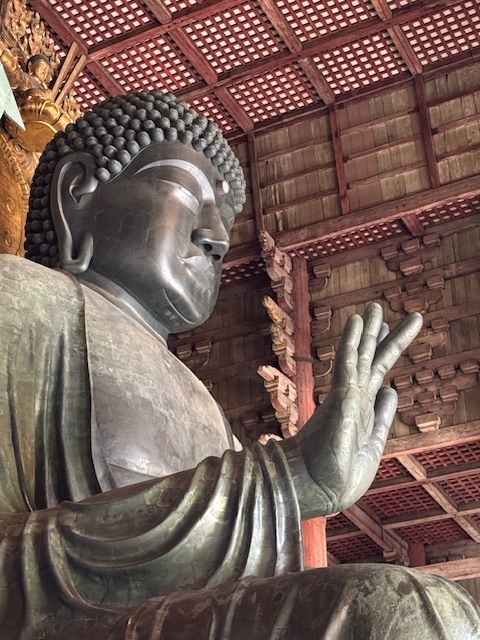
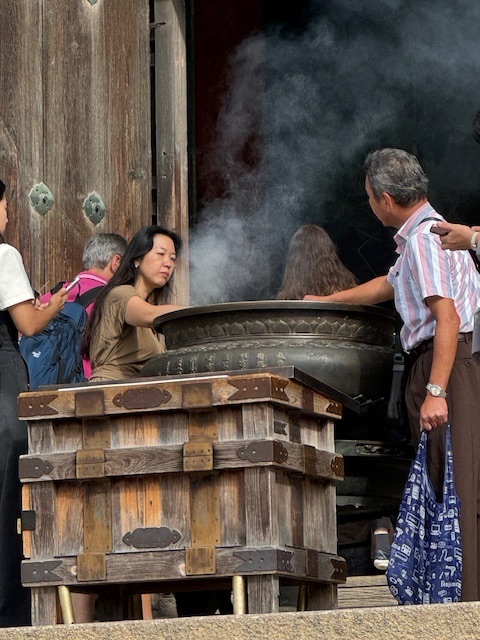
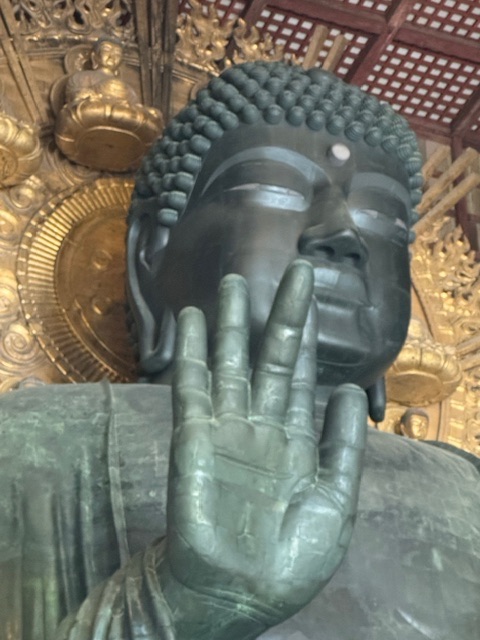
The statue itself is about 49 feet tall and weighs over 500 tons, making the building’s immense size necessary just to house it.
To give one a point of comparison: the temple is about the same length as London’s St. Paul’s Cathedral. Its height is comparable to a 15-story building. And, if seeking shelter, the Statue of Liberty could nearly fit beneath the temple’s roof.
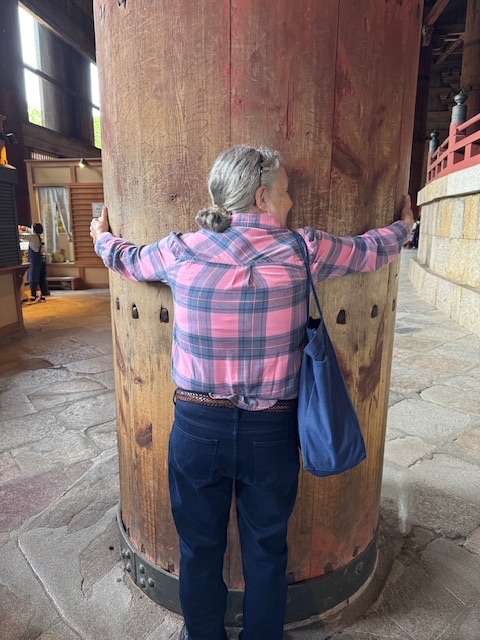
in the world
Amazingly the original Great Buddha Hall of Tōdai-ji, completed in the mid-8th century, was even larger! That first structure stretched about 285 feet long and 164 feet wide, with a roofline so vast it required two massive pagodas standing over 328 feet tall on either side.
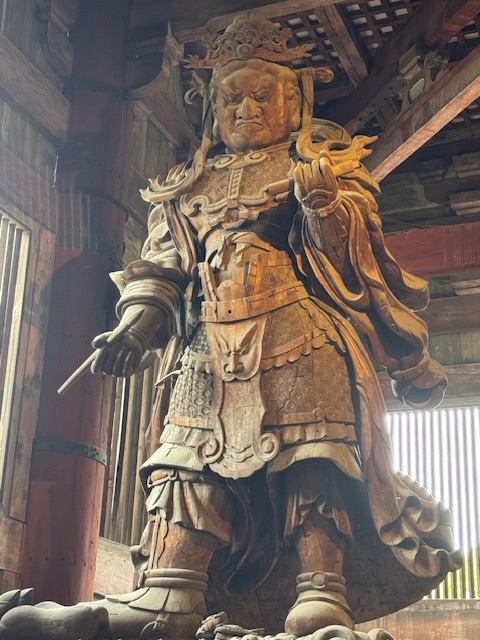
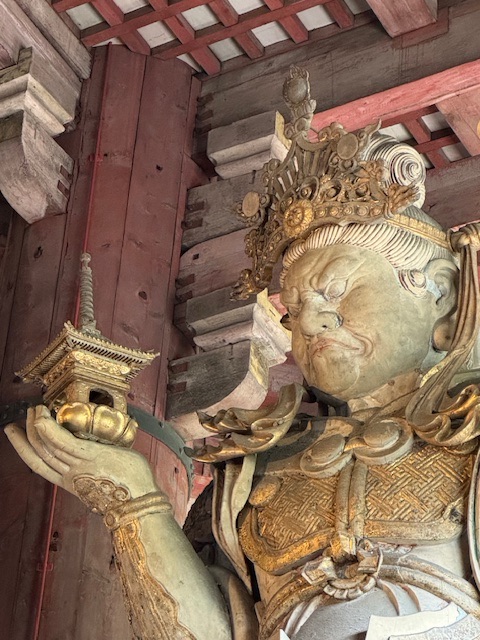
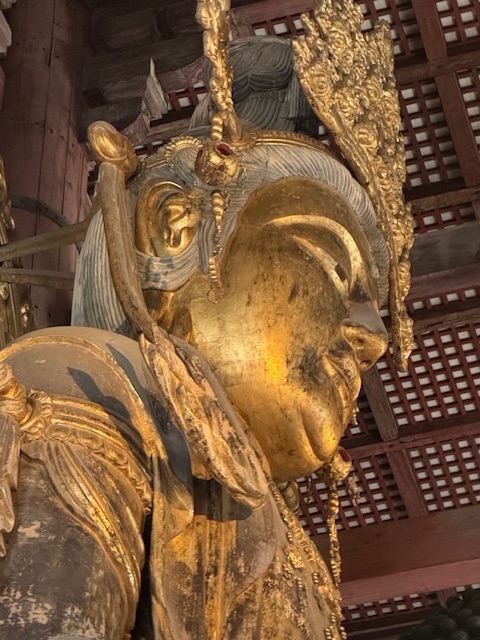
However, the hall suffered repeated disasters. Fires during wars in the 12th and 16th centuries destroyed much of the original structure, including the surrounding buildings and parts of the Great Buddha itself.
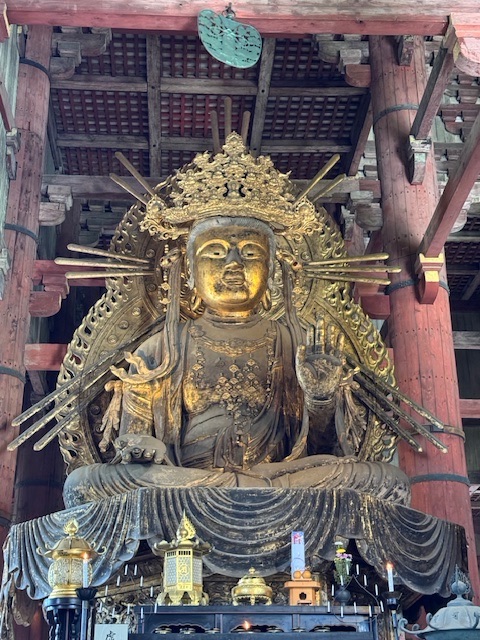
When constructed in 1709, the hall occupied a smaller footprint due to the enormous cost and effort required.
The temple interior houses not only the massive Buddha but other massive guardian kings.
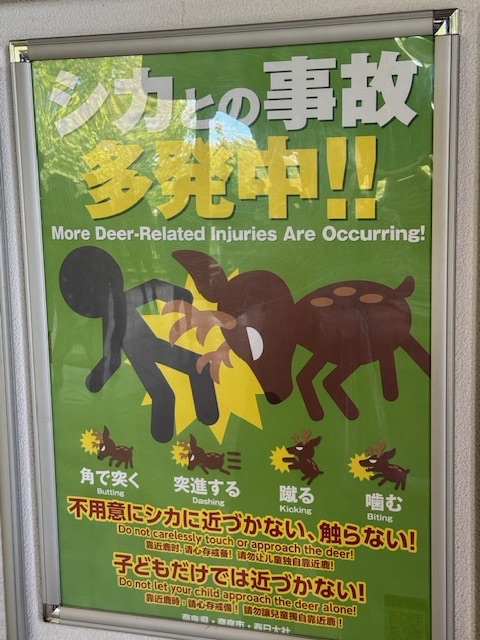
Kasugataisha Shrine
Bright vermillion columns, a graceful roofline, and scores of lanterns welcome us to Kasugataisha Shrine within the gardens of Nara Park. The shrine was established in 768 CE at about the same time the city became the capital. It is dedicated to the deity responsible for prosperity, good fortune, and protecting the city.
Today, Kasugataisha is part of the UNESCO World Heritage Site “Historic Monuments of Ancient Nara” and remains an active place of worship.
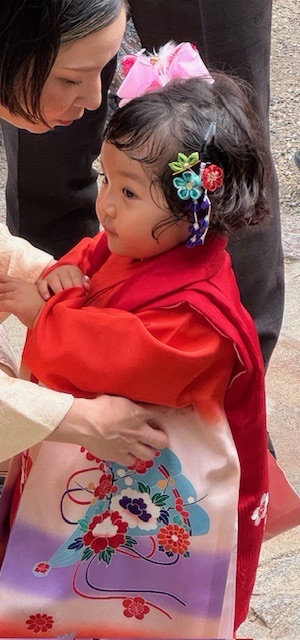
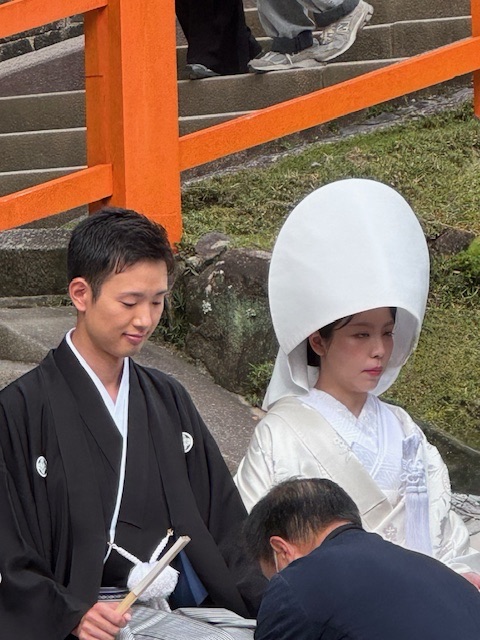
Weddings and first birthdays are also celebrated here. Children in traditional clothing add to the beautiful atmosphere.
What makes Kasugataisha especially striking is its setting and atmosphere. The shrine is famous for its thousands of stone lanterns lining the forested approach and the hundreds of bronze lanterns hanging within the shrine grounds.
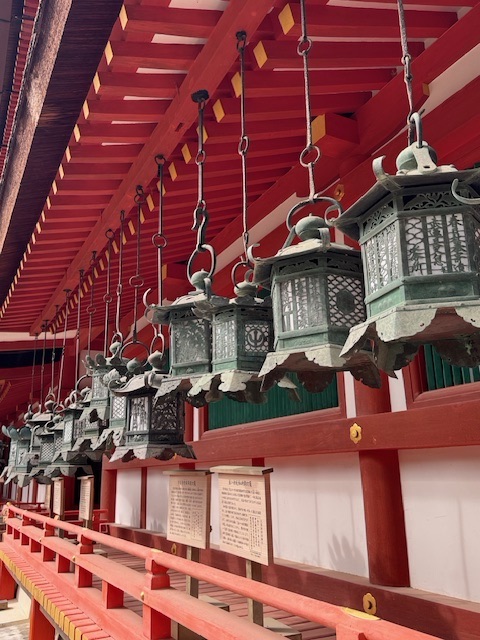
These lanterns glow during the Lantern Festivals in February and August. Buildings shine in vivid vermilion with white accents, a contrast to the surrounding greenery of the sacred Kasugayama Primeval Forest, protected since ancient times.
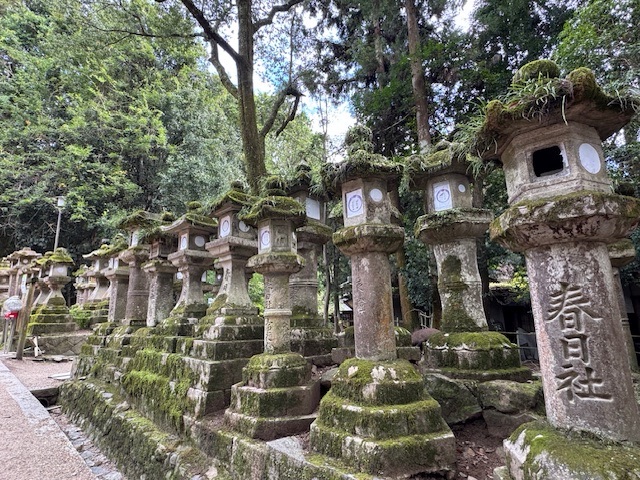
A special darkened room features a grouping of lighted lanterns representing the thousands lit during special events and illuminate various areas of the park.
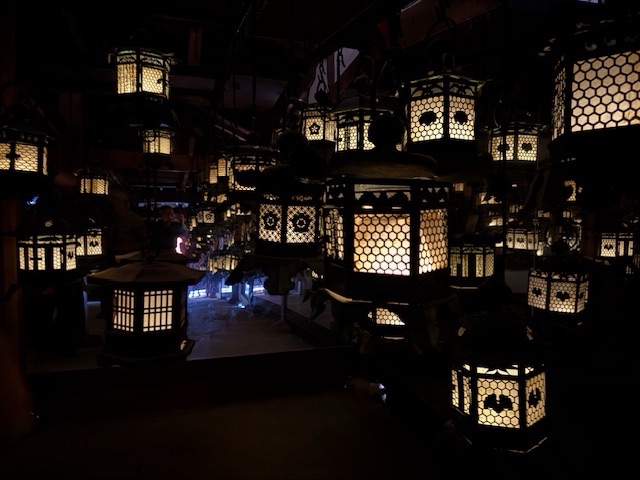
Yoshikien
An old illustration of Kōfukuji Temple shows that its branch temple, Manishuin, once stood on what is now the Yoshikien Garden site. During the Meiji period (1868–1912), the land became privately owned, and in 1919, during the Taishō era, the present buildings and garden were designed and constructed. By the end of the Shōwa period (1926–1989), the property had shifted from a corporate guest house to the ownership of Nara Prefecture.
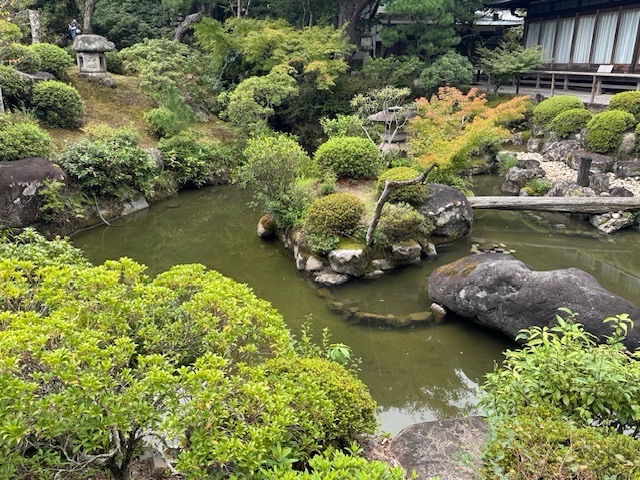
Aiming to make it accessible for enjoying the gardens and tea ceremonies, it opened to the public on April 1, 1989. The 2 acre grounds contain three gardens: Ikenoniwa (Garden with a Pond), Kokenoniwa (Moss Garden), and Chabananoniwa (Tea Ceremony Garden with Seasonal Flowers). In Kokenoniwa stands a traditional thatched-roof tea house, preserving the quiet elegance of Japan’s garden culture.
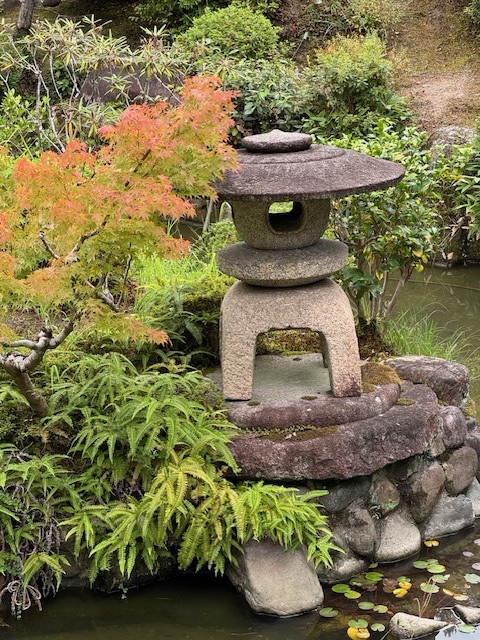
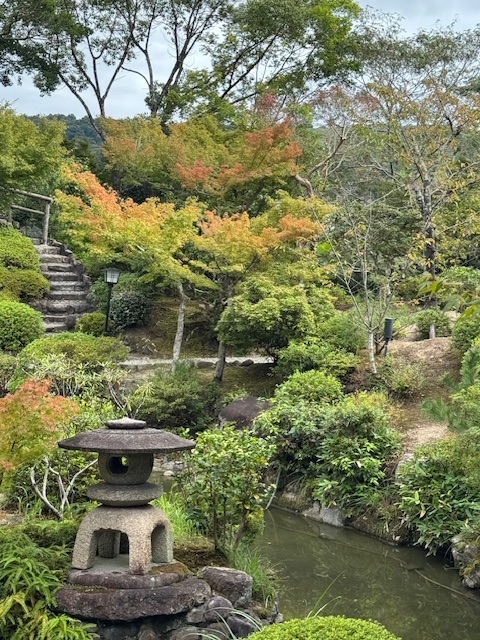
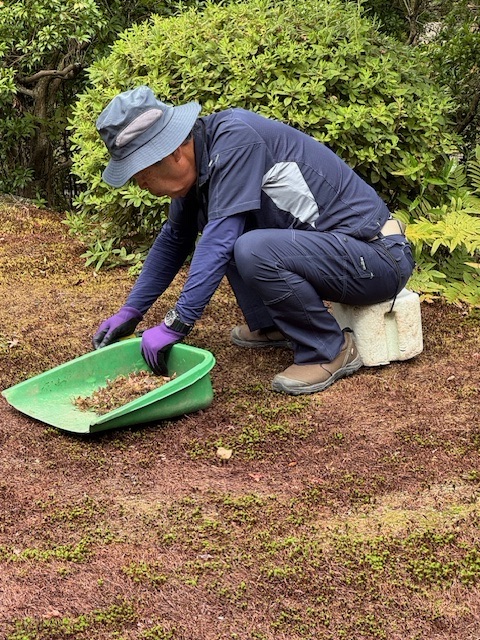
Japanese gardener, or
A Stop That Refreshes
In the heat and humidity of the afternoon, after walking 5 miles of parks, repelling deer, and stepping around poop pellets, we stop in at Loca Rusty.
Couldn’t be a better choice. Loca is a true retro cafe of eclectic décor. I enjoy a coke float and some ukulele melodies from Lori.
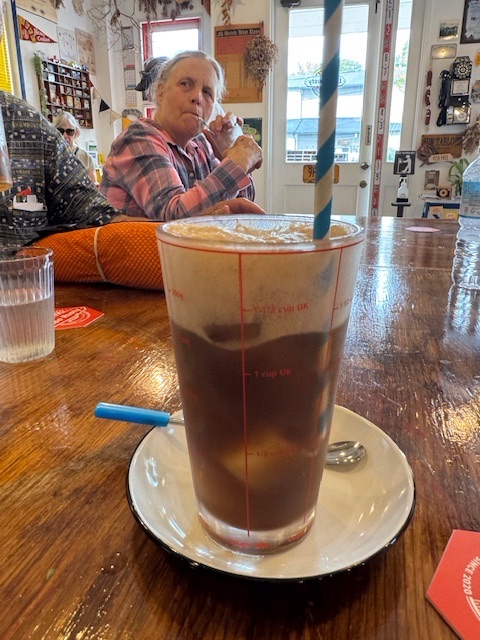
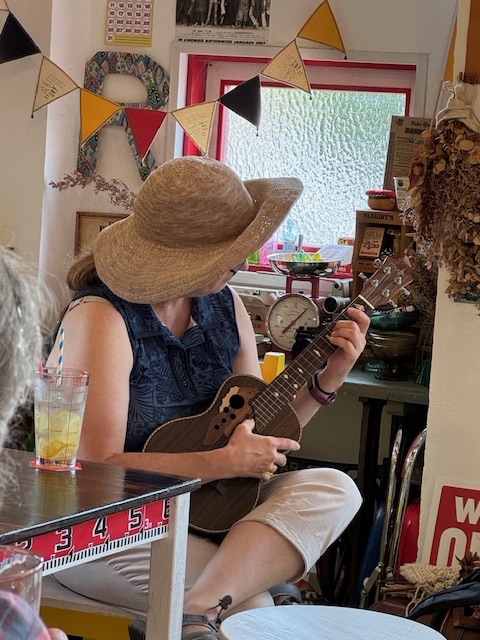
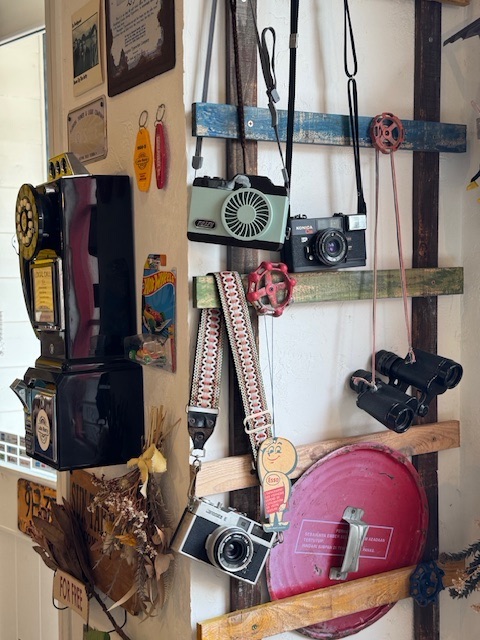
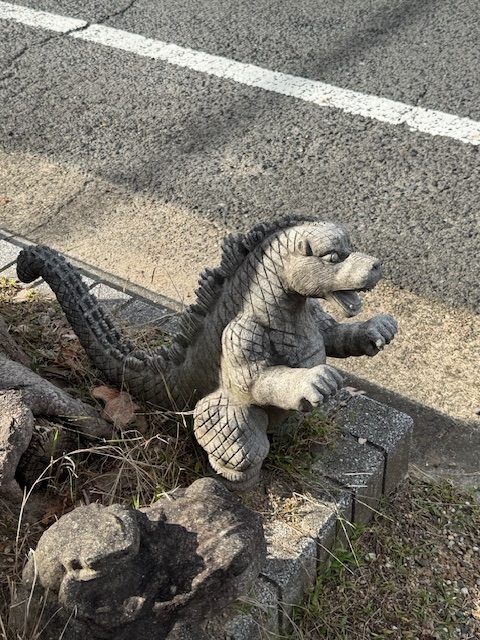
Overnight in Nara
Our two nights lodging was to be the Hotel Nikko Nara across from the train station. However, ElderTrek has upgraded to the Marriott. That is quite a step up in luxury. It even has a lounge for a beer.


Once again, heavy luggage travels separately to our final destination in Osaka. The sight of group baggage reminds me how wonderful it is to travel light. My backpack is currently weighing in at about 13 pounds.
Nara offered a perfect blend of history, spirituality, and playful charm, from towering Buddhas to bowing deer. A day here feels like stepping back in time while sharing the present with the city’s most mischievous, ever-present four-legged residents. Tomorrow, I leave the furry beggars behind for further adventures.

If you haven’t fucked up lately, you haven’t been enjoying life.
Pat Bunyard
0 Comments